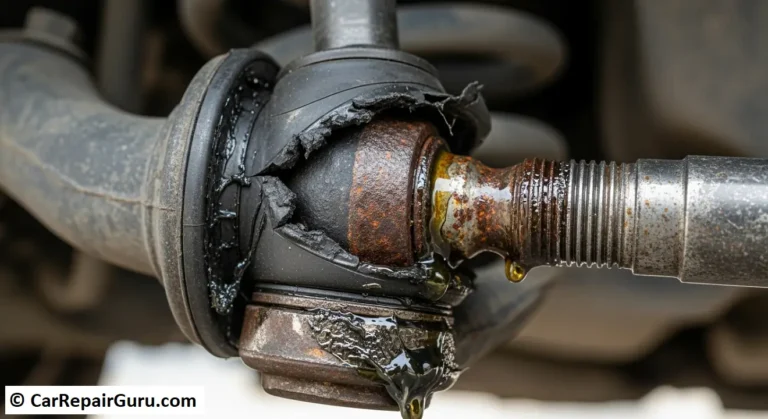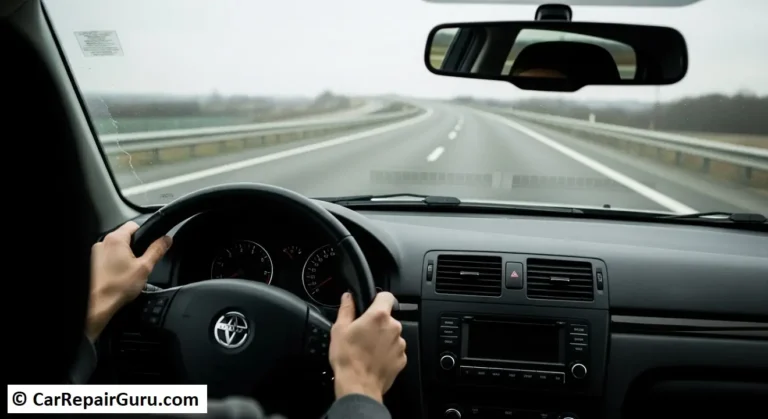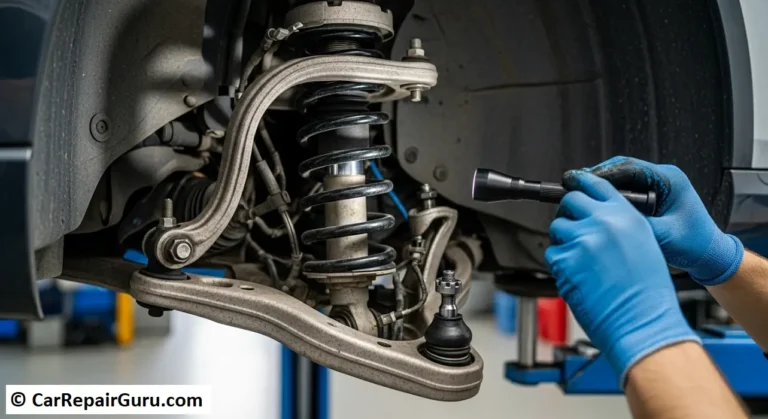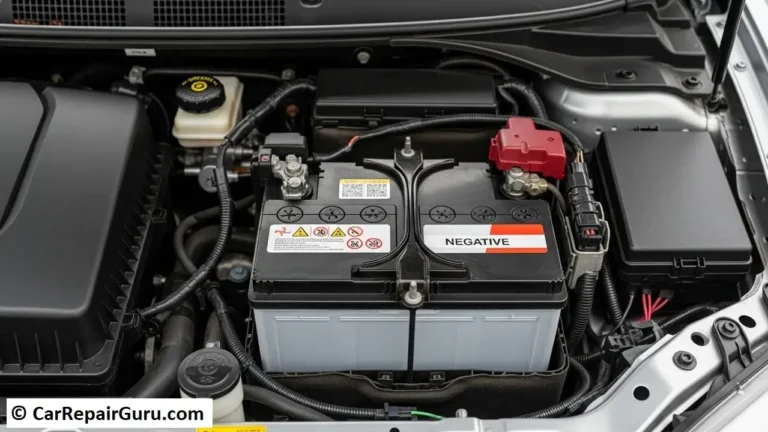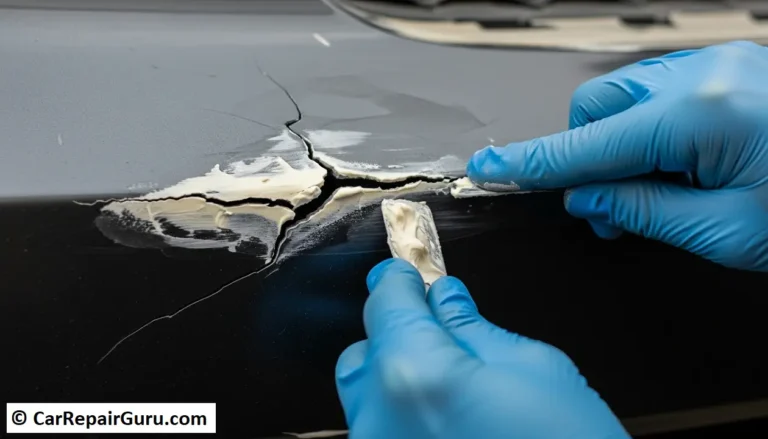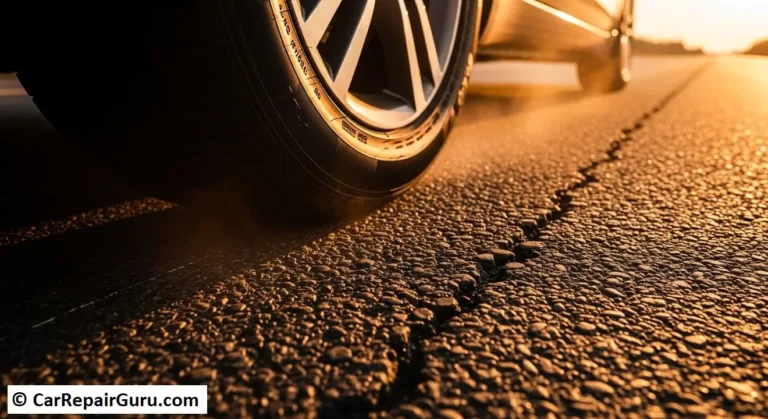
Driving through a sharp curve should feel smooth and controlled—not like you’re wrestling with your steering wheel or sliding across the road. That’s where cornering stability comes in. It’s the invisible yet powerful force behind your car’s ability to stay balanced and responsive when making turns, especially at higher speeds or on winding roads. Whether you’re navigating city streets or cruising along mountain passes, solid cornering performance is key to both safety and driving enjoyment.
But what exactly determines how stable your car is in a turn? It’s more than just the steering—it’s a combination of factors like tire condition, suspension system integrity, and wheel alignment. These elements work together to keep your vehicle steady, reduce the risk of skidding, and give you full control, no matter the curve ahead.
In this guide, we’ll break down how cornering stability works, what components influence it, and—most importantly—how to maintain it. Whether you’re a seasoned driver or new to car care, you’ll find practical tips to improve vehicle handling and drive with more confidence and control.
Understanding Cornering Stability
When you take a turn, your car is doing more than just changing direction—it’s shifting weight, adjusting grip, and working overtime to stay balanced. That delicate dance is what we call cornering stability. It’s your vehicle’s ability to stay in control during turns, resisting tendencies like understeer (when the car turns less than intended) or oversteer (when the rear slides out more than expected). Poor cornering performance can make your car feel wobbly, disconnected, or even unsafe, especially on tight or fast corners.
One of the key players in this process is the suspension system. It helps keep your tires firmly planted on the road surface, even when the weight of the car shifts during a curve. If your suspension is worn out or unbalanced, it compromises your car’s cornering stability, leading to body roll, delayed responses, or even loss of control.
Another critical factor is tire pressure. Tires that are over- or under-inflated can reduce tire grip, making it harder for your vehicle to respond accurately to steering input. Combine this with poor wheel alignment, and you’ll likely experience inconsistent handling, especially during cornering.
Then there’s cornering stiffness—a term that describes how well your vehicle resists body lean during a turn. The stiffer the setup (within reasonable limits), the better your vehicle stability. Components like anti-roll bars help achieve this by distributing weight more evenly across all four tires, keeping the car level and predictable.
In short, achieving good cornering stability isn’t about one component—it’s about the harmony between the suspension, tires, and alignment. When these systems work together, your car handles like it should: smooth, responsive, and in control. And when they don’t, even a gentle curve can feel like a challenge.
Key Components Influencing Cornering Stability
If you want your vehicle to corner with confidence, you’ve got to start with the basics—the parts that physically connect your car to the road. Cornering stability isn’t about luck; it’s about mechanical harmony. When your tires, suspension, alignment, and electronic systems are all working together, your car stays balanced, responsive, and safe. Let’s break down the key components that directly influence how your car behaves during a turn.
Tires
Think of tires as the foundation of cornering performance. Without proper tire grip, even the most advanced suspension system won’t help. The type of tire you choose—performance, all-season, or sport—can greatly affect how well your car corners. Equally important is tire pressure. Underinflated or overinflated tires can compromise stability, reduce grip, and cause uneven wear. Make it a habit to check your tire pressure regularly, especially before long drives or spirited cornering.
Suspension System
Your suspension system is like your car’s shock absorber and balance mechanism all in one. It helps the vehicle absorb bumps and dips while keeping the tires in full contact with the road. When it comes to cornering stiffness, components like shocks, struts, and anti-roll bars do the heavy lifting. They reduce body roll, distribute weight more evenly during turns, and keep the car stable even when the road isn’t.
If your suspension is worn or damaged, you’ll likely notice poor vehicle handling, delayed steering responses, and a “floaty” feeling when turning. Routine checks can help prevent those issues before they start affecting your driving experience.
Wheel Alignment
Many drivers underestimate the importance of wheel alignment. When your wheels are misaligned, your car doesn’t just veer off course—it also suffers in the cornering department. Proper alignment ensures that your tires are angled to provide maximum grip and stability. It affects everything from steering response to tire wear. If your vehicle feels “off” when turning or pulls to one side, it might be time for an alignment check.
Electronic Stability Control (ESC)
Modern vehicles are equipped with ESC systems that continuously monitor traction and steering. When you’re cornering aggressively or on slippery surfaces, ESC detects loss of control and applies braking to individual wheels to keep the car stable. It’s an often-overlooked feature, but it plays a huge role in maintaining cornering stability, especially in emergency maneuvers.
Keeping these components in good shape isn’t just about performance—it’s about safety. When they’re aligned and maintained properly, your car becomes a well-balanced machine that handles every corner like it was built for it.
Maintenance Practices to Enhance Cornering Stability
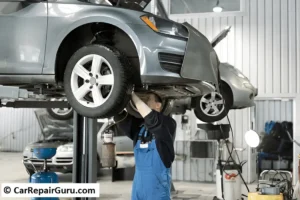
You don’t need to be a mechanic to significantly improve your car’s cornering stability—you just need to stay on top of a few essential maintenance tasks. When done regularly, these practices help your car stay planted, responsive, and predictable when you’re taking turns. Let’s walk through the key maintenance steps that can make all the difference in how your vehicle handles corners.
Tire Inspections and Rotation
Your tires are your first line of defense when it comes to maintaining tire grip. Inspect them regularly for tread depth, uneven wear, and proper tire pressure. Driving on overinflated or underinflated tires can make your car feel floaty or twitchy in turns, reducing overall cornering performance. Stick to your vehicle manufacturer’s recommended tire pressure, and don’t forget to rotate your tires every 5,000 to 7,500 miles. Regular rotation ensures even wear across all tires, which helps maintain consistent traction and stability in every corner.
Suspension System Checks
The suspension system plays a major role in reducing body roll and improving cornering stiffness. Components like shocks, struts, and anti-roll bars wear down over time and lose their ability to absorb bumps or keep the car level. If your car starts bouncing more than usual, sways in turns, or feels less connected to the road, it’s probably time to inspect the suspension. Replacing worn parts can restore your vehicle stability and drastically improve how your car corners.
Wheel Alignment
Misaligned wheels are a silent killer of cornering stability. Poor wheel alignment can cause your vehicle to drift, reduce steering precision, and wear out your tires unevenly—all of which negatively affect your ability to take turns safely. It’s a good idea to have your alignment checked at least once a year, or anytime you hit a major pothole or curb. Proper alignment ensures your tires make full contact with the road, especially during turns.
ESC System Maintenance
Your Electronic Stability Control (ESC) system works in the background to help maintain control during sharp or slippery turns. If the ESC warning light comes on, don’t ignore it. Get the system diagnosed and repaired if necessary. A functioning ESC system enhances both vehicle handling and cornering stability, especially in emergency maneuvers or on wet roads.
Keeping up with these simple maintenance tasks can turn a shaky, unpredictable ride into one that hugs the road and corners with confidence.
Driving Techniques for Better Cornering Stability
While your car’s components play a major role in cornering stability, your driving style can make or break how well your vehicle handles turns. Even with top-notch suspension and tires, poor technique can lead to instability, loss of traction, or even dangerous situations. Fortunately, a few smart driving habits can go a long way in improving your cornering performance and keeping your ride safe and smooth.
Brake Before the Turn, Not During It
One of the golden rules for better vehicle handling in corners is to do your braking before you enter the turn—not while you’re in it. Sudden braking mid-corner can disrupt your car’s weight balance, leading to understeer or oversteer. Instead, slow down gently as you approach the curve, allowing your tires to grip the road more effectively and your suspension to adjust smoothly.
Smooth Steering and Throttle Control
Sharp or jerky steering inputs throw off your car’s balance, making it harder for the suspension system to do its job. Smooth, gradual movements let your tires maintain contact with the road and keep your car’s weight evenly distributed. Likewise, avoid slamming on the gas mid-turn. Gentle throttle input allows your car to maintain speed without losing tire grip or overloading the rear wheels.
Adapt to Road Conditions
Even the best driving techniques need to be adjusted when the weather changes. On wet, icy, or loose surfaces, cornering stability drops significantly, and mistakes are less forgiving. Always slow down in poor conditions, increase your following distance, and be even more deliberate with your steering, braking, and acceleration.
Know Your Car’s Limits
Every car handles differently—some are designed for tight, agile corners, while others are built more for comfort than performance. Get familiar with how your specific vehicle responds in different situations. Learn the limits of your tires and suspension, and don’t push beyond them.
Mastering these techniques doesn’t require racing skills—just awareness and practice. By driving with a balanced, thoughtful approach, you not only improve your cornering stability, but also make every trip safer and more enjoyable.
Common Signs of Compromised Cornering Stability

Cornering shouldn’t feel unpredictable or uncomfortable. If your vehicle doesn’t feel stable when navigating turns, it could be a sign that something’s off. Recognizing the early symptoms of compromised cornering stability can help you address the issue before it becomes a safety concern. Let’s look at the most common warning signs to watch for.
Uneven Tire Wear
One of the first red flags is uneven tire wear, especially on the inner or outer edges. This often points to poor wheel alignment or a worn-out suspension system. When your tires wear unevenly, it reduces tire grip, making your car less responsive in turns and potentially unsafe in emergencies. Routine tire checks can help you catch this early.
Pulling to One Side During Turns
If your car consistently pulls to one side when cornering, that’s not normal—it’s likely a sign of misalignment, suspension imbalance, or even uneven braking force. This affects vehicle stability and steering precision, both of which are crucial for safe turning.
Unusual Noises While Turning
Hearing squeaks, clunks, or thumps during a turn? These noises often come from worn shocks, struts, or anti-roll bars. If these components fail, they can’t properly support your car’s weight through a corner, leading to excessive body roll and compromised cornering performance.
Dashboard Warning Lights
Don’t ignore warning lights related to your Electronic Stability Control (ESC) or tire pressure monitoring system (TPMS). These alerts are your car’s way of saying something isn’t right. An active ESC light may mean the system is malfunctioning, which can seriously reduce your car’s ability to maintain cornering stability in slippery or fast turns.
Spotting these signs early can help you prevent bigger issues down the road—and keep your car cornering like it should.
Conclusion
Cornering stability is more than just a performance feature—it’s a critical part of driving safely and confidently. Whether you’re navigating sharp turns, merging onto highways, or driving in bad weather, a stable vehicle gives you better control and peace of mind. When your tires have proper grip, your suspension system is functioning properly, and your wheel alignment is spot-on, your car responds exactly how you expect it to—even in tight corners.
Staying on top of routine maintenance, like tire inspections, alignment checks, and suspension evaluations, can make a big difference in how your vehicle handles turns. Combine that with smart driving habits—such as smooth steering and braking—and you’re setting yourself up for years of safer, more enjoyable driving.
Don’t wait for warning signs like uneven tire wear, strange noises, or ESC alerts to take action. By understanding how cornering performance works and proactively addressing issues, you not only protect your car but also everyone riding in it. In the end, maintaining cornering stability isn’t just about better handling—it’s about driving smarter and safer every day.
FAQ
Q1: How can I improve my car’s cornering stability?
A1: To improve cornering stability, ensure your tires are properly inflated and have sufficient tread. Regularly inspect and maintain your suspension system and wheel alignment. Stiffening your car’s suspension with performance parts or adjusting anti-roll bars can also help. Lastly, ensure your ESC system is functioning properly.
Q2: Why is cornering stability important for my safety?
A2: Cornering stability is vital for maintaining control of your vehicle during turns, especially at high speeds. A loss of control can lead to accidents, and poor stability can result in skidding or flipping. Proper maintenance of tires, suspension, and alignment helps keep your car stable and safe on the road.
Q3: What affects cornering stability?
A3: Several factors affect cornering stability, including tire pressure, suspension system health, wheel alignment, and the ESC system. These components work together to provide the necessary grip and balance for safe cornering.
Q4: How often should I check my car’s suspension and alignment?
A4: It’s recommended to check your suspension system and wheel alignment every 12,000 miles or whenever you notice signs of handling issues, such as pulling to one side or uneven tire wear. Regular checks ensure that your car maintains optimal cornering performance.
